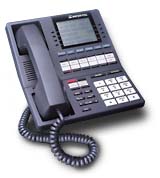Message-ID: <20220813194203.GA78212@telecomdigest.us>
Date: Sat, 13 Aug 2022 19:42:03 +0000
From: Bill Horne <malassimQRMilation@gmail.com>
Subject: Big Telco Financial Results Reveal Some Surprises (Podcast)
By Laura F. H. McDonald
Recent Q2 2022 financial results from some of the big telcos tell a
much different story from a few years ago, and certainly from 8-10
years ago. AT&T and Verizon both had a weak 2nd quarter and the
headline for both is that they had declines in the wireline enterprise
market.
Listen to this 12-minute podcast as Laura McDonald, a Senior Partner
at LB3, and Tony Mangino, a Director at TC2, talk to Joe Schmidt about
why the carriers saw a decline in wireline revenue and offer tips for
navigating the changing enterprise market.
https://tinyurl.com/4c3mbbuk
--
(Please remove QRM from my email address to write to me directly)
Message-ID: <20220813200526.GA78422@telecomdigest.us>
Date: Sat, 13 Aug 2022 20:05:26 +0000
From: Telecom Digest Moderator
<telecomdigestsubmissions@remove-this.telecom-digest.org>
Subject: FCC Expands Satellite Use Of 17 GHz Spectrum
By J.G. Harrington and Henry Wendel
The Federal Communications Commission has adopted new rules to expand
the use of spectrum in the 17 gigahertz band to transmit data to
Earth. This decision allows the spectrum, which previously had been
reserved for feeder links and direct broadcast satellite (DBS)
service, to be used by any geostationary satellite operators providing
fixed-satellite service. It also is noteworthy because the FCC
rejected requests to set this spectrum aside for terrestrial wireless
use and instead affirmed that it should be used for satellite
services.
Historically, 17 GHz spectrum has been used for feeder links, which
send signals from the Earth to satellites, but the FCC made the band
available to DBS operators for space-to-Earth transmissions in
2007. This decision makes the spectrum from 17.3 to 17.7 GHz and 17.7
to 17.8 GHz available to other satellite service operators using
geostationary satellites to reach fixed customer locations. The new
rules also authorize blanket licensing of earth stations in the 17 GHz
frequencies, including earth stations used in moving vehicles. The FCC
expects that the new spectrum will be used to support broadband
operations =E2=80=93 and that satellite operators will take advantage of
spot beam technology to reuse the spectrum efficiently across the US.
https://tinyurl.com/5yefhcdb
Message-ID: <2c5de70b-8056-4fd5-fe9c-33b41f2a6a81@gmail.com>
Date: Sat, 13 Aug 2022 15:11:25 -0400
From: Bill Horne <malQRMassimilatoin@gmail.com>
Subject: Please take a look at the latest update to the Digest's
"Online" version [nfp]
We're getting closer to a usable design for the Telecom Digest web site,
and I'd appreciate your feedback about what's in need of improvement and
what you like.
Please take a look at this page
<https://telecomdigest.net/archives/back.issues/recent.single.issues/d4.html>
and let me know. Thanks!
Bill Horne
(Please remove QRM from my email address to write to me directly)
|



